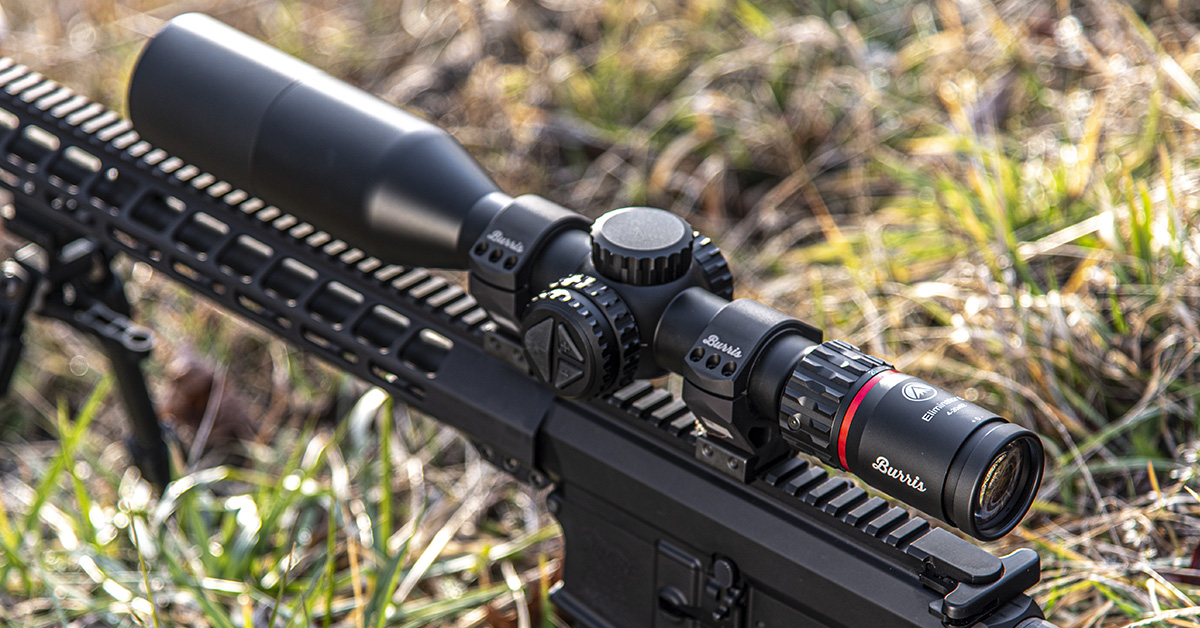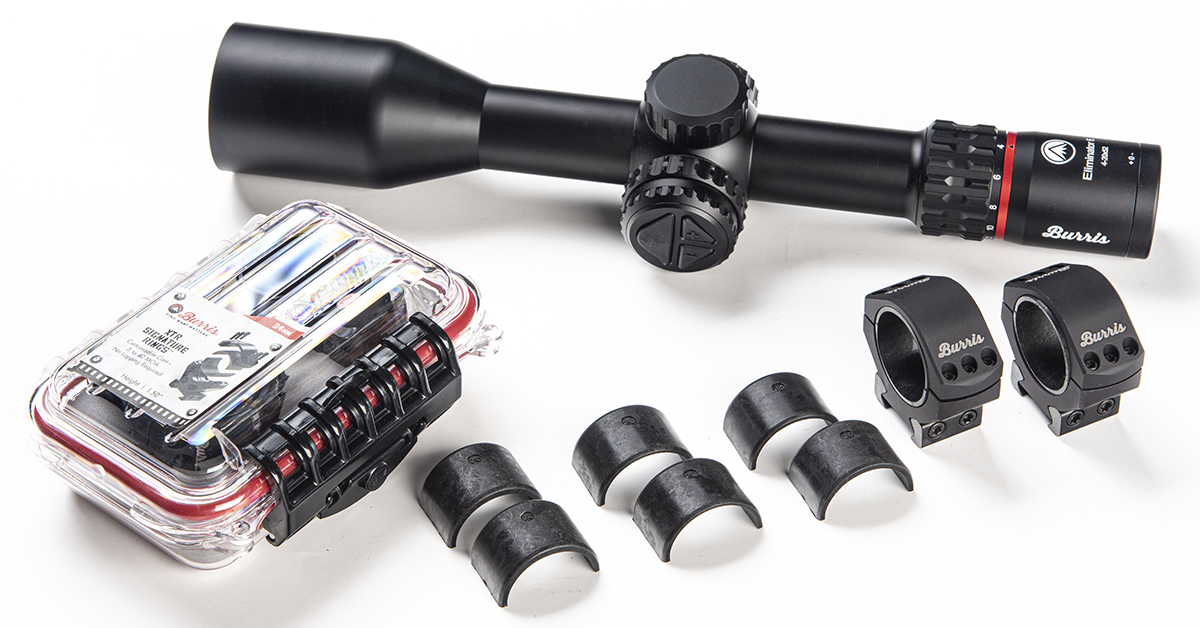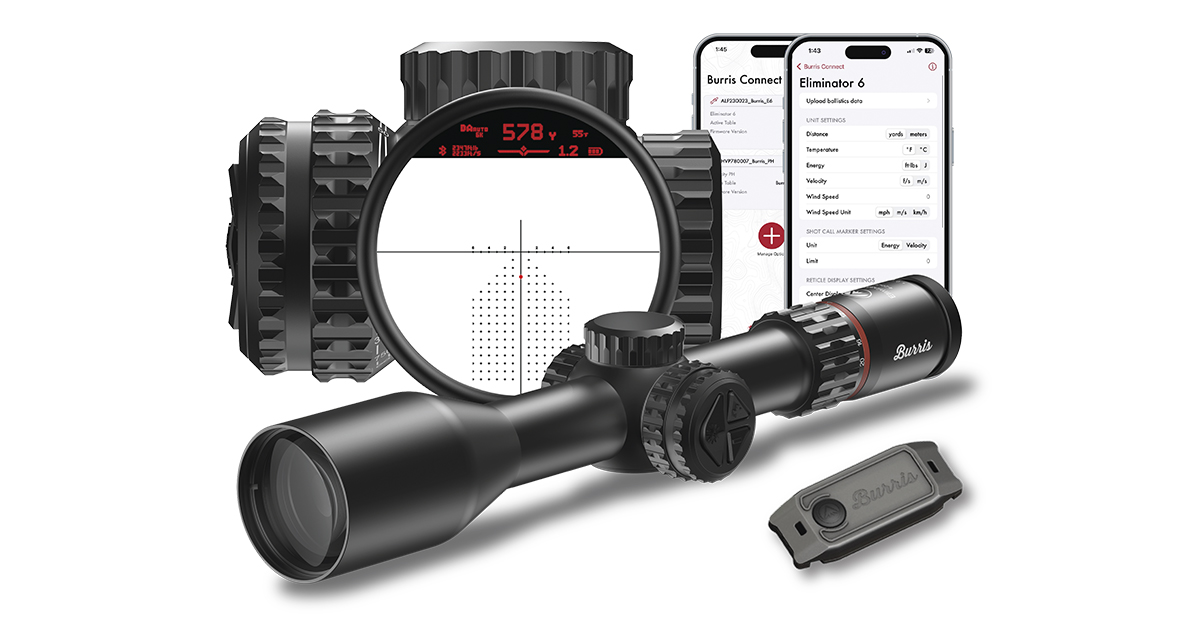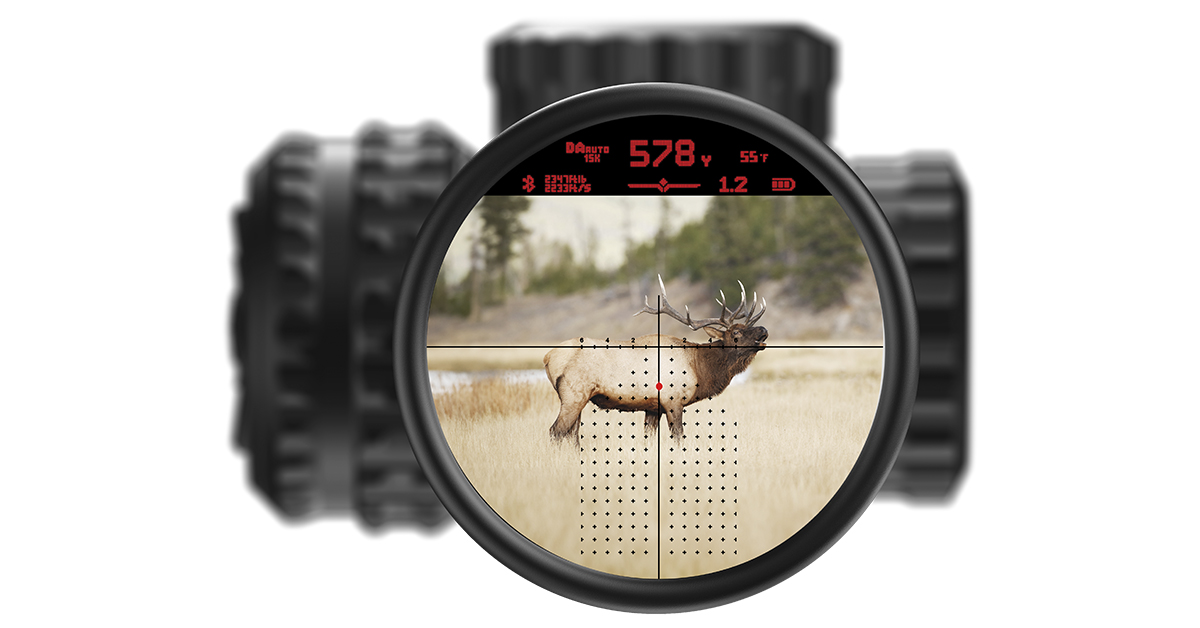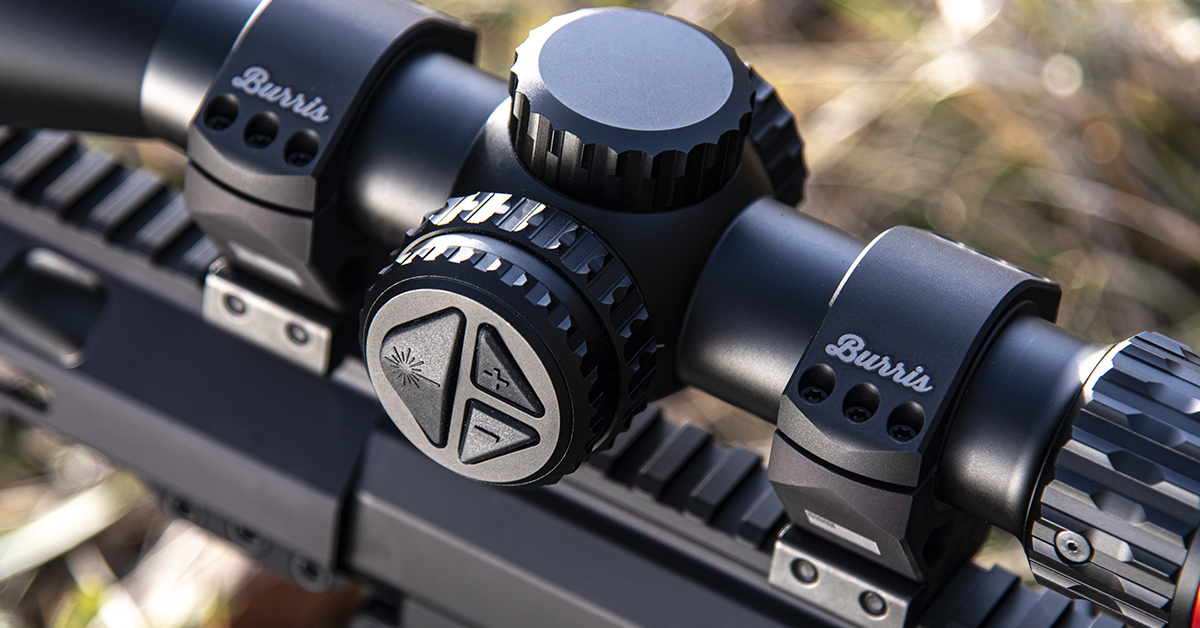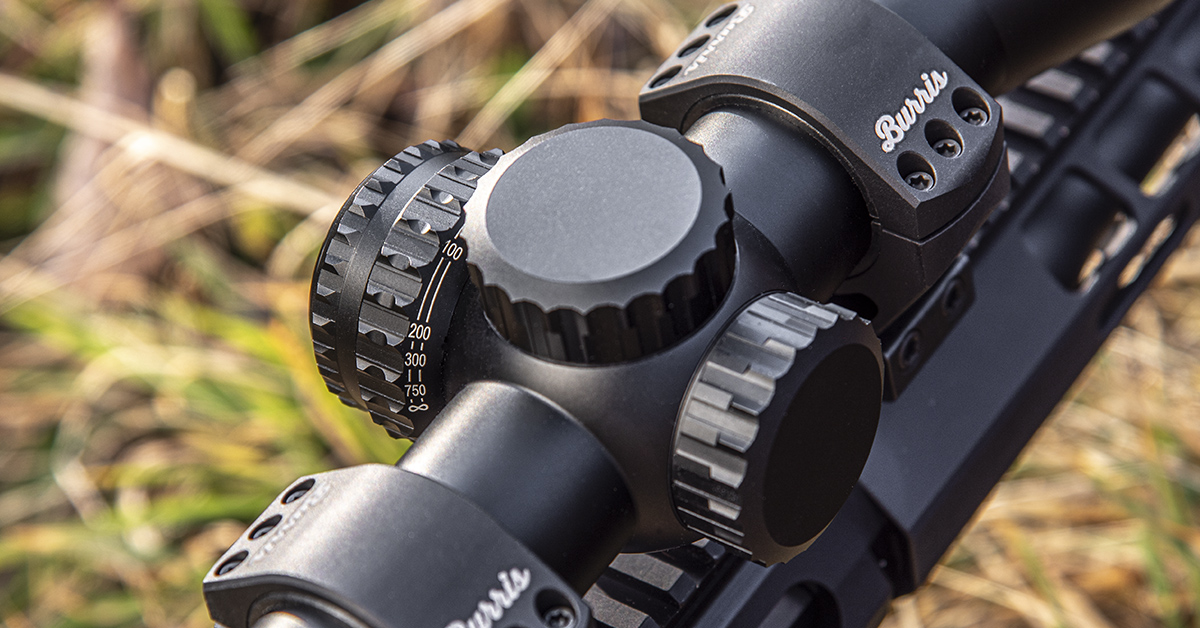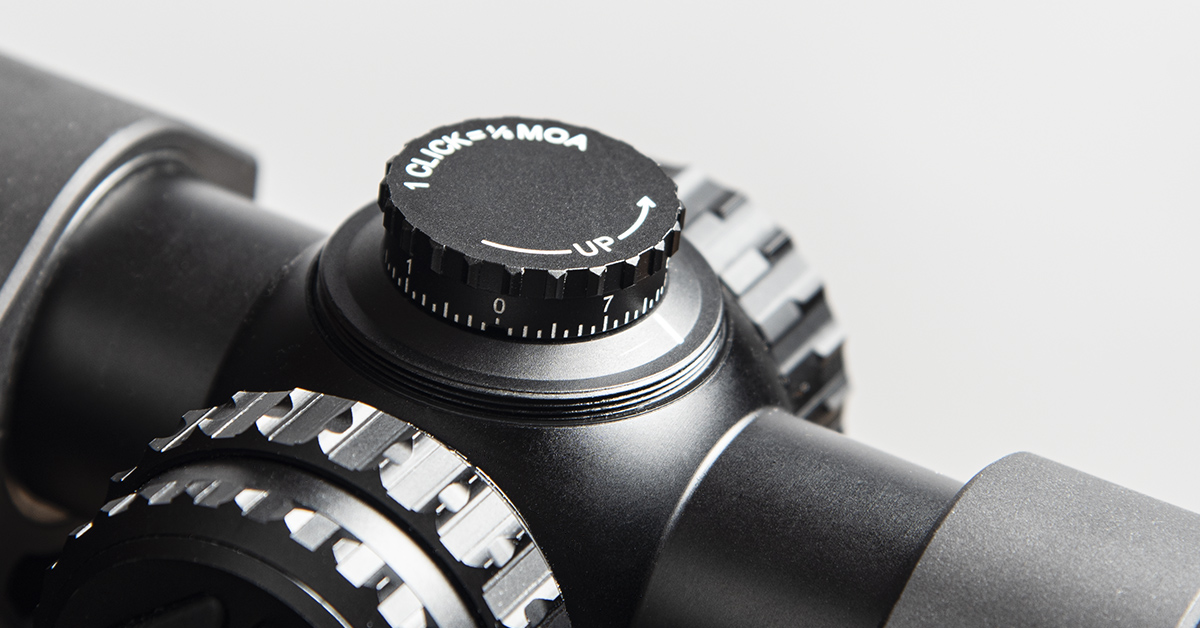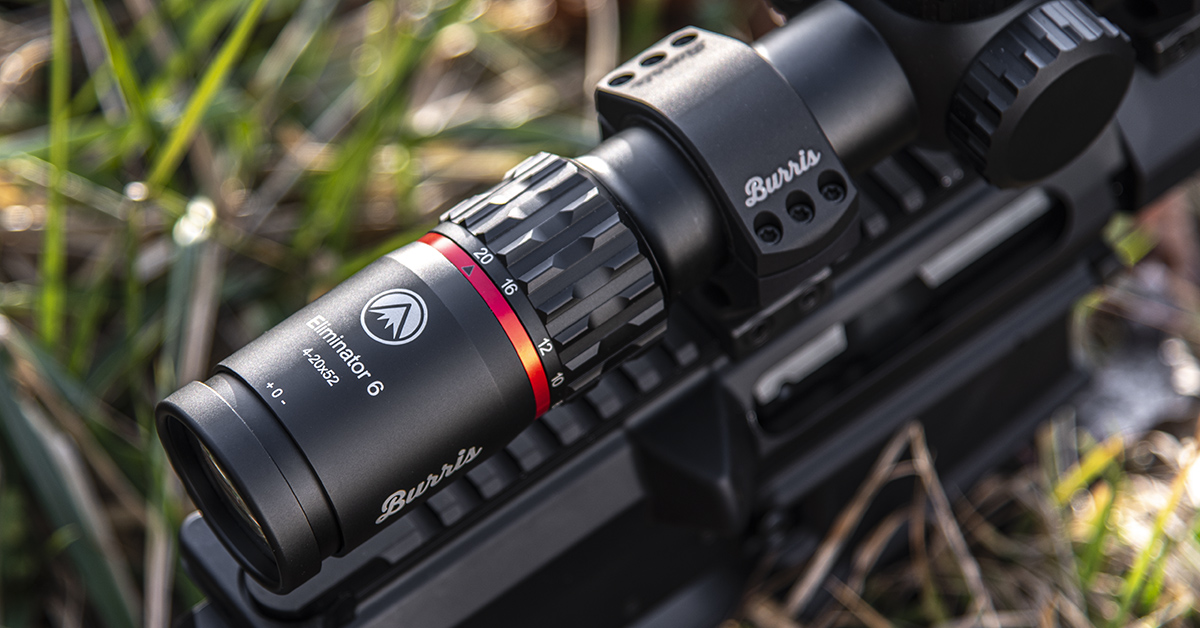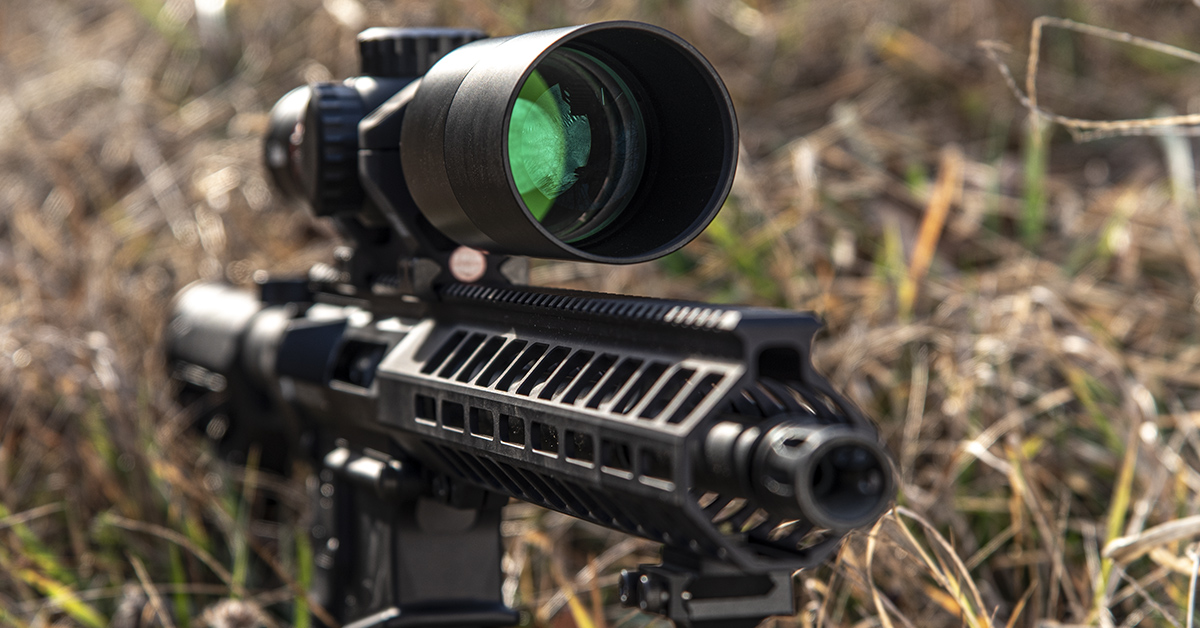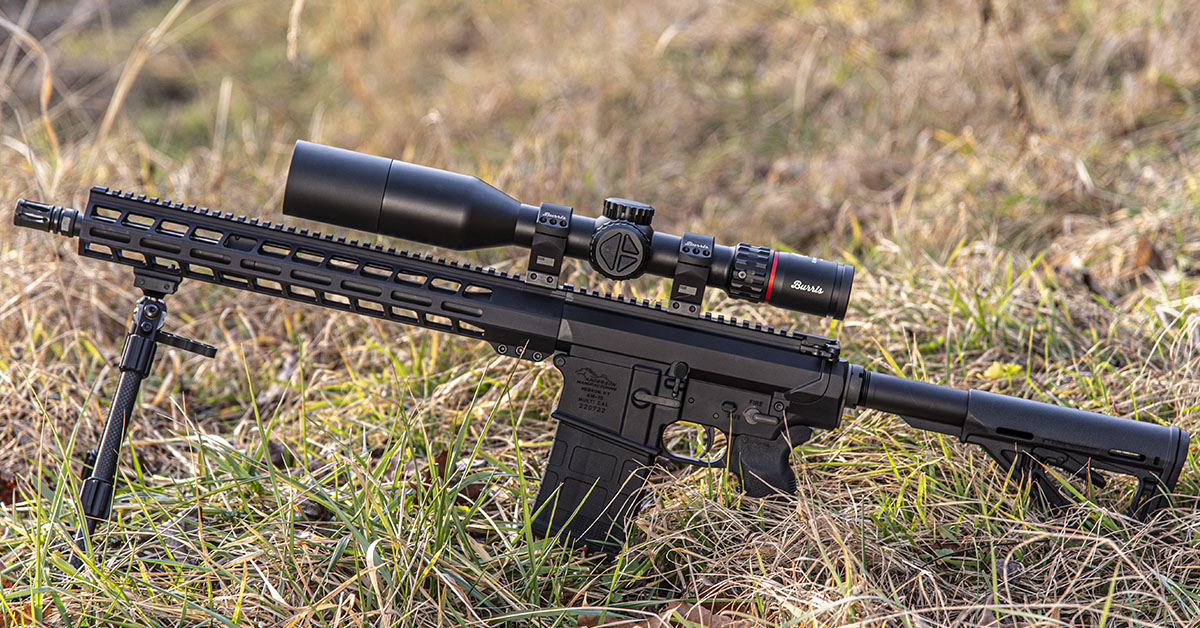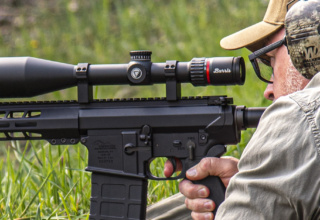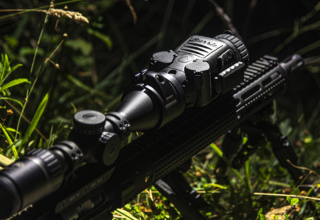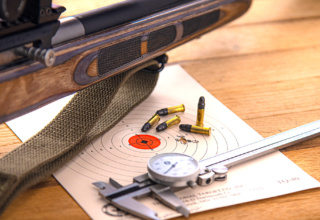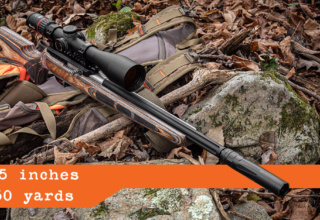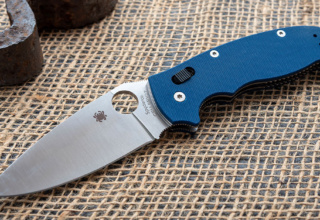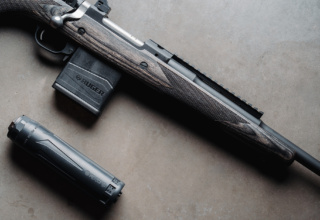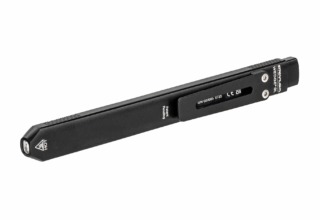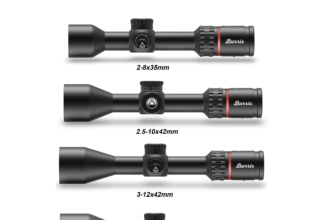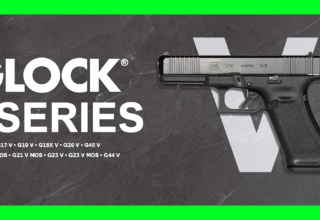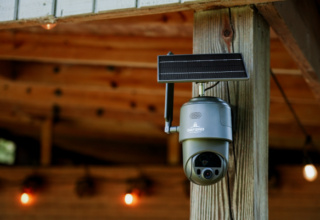With its all-in-one range-and-shoot capabilities plus customizable ballistic tables and user interface, the freshly designed next-generation Eliminator 6 may be the hunting scope you’ve been holding out for
by Rob Reaser
Those who pay close attention to firearms glass are doubtless familiar with Burris Optics. The Greeley, CO, company has a long history in the hunting optics field going back to 1972. More importantly in the eyes of contemporary shooters and hunters, Burris has taken a commanding lead in this field by delivering innovation not for innovation’s sake, but to provide shooters with designs and technology that solves problems for real-world applications. There is no finer representation of this commitment to forward thinking than in the company’s 18-year laser rangefinding riflescope history.
Burris brought out its Ballistic LaserScope in 2006, which combined a laser rangefinder and their Ballistic Plex reticle to give shooters a single platform to range and adjust for bullet drop at extended distances. That was a big leap for hunters because it eliminated the need for a separate rangefinder to determine drop compensation. Four years later, Burris took this concept to the next level when it introduced the first-generation Eliminator LaserScope. Offered in 4-12X magnification, the Eliminator LaserScope refined drop compensation by allowing the user to upload their ammo’s ballistic data. Upon ranging, the scope then automatically illuminated the correct holdover point on the reticle for that distance and load.
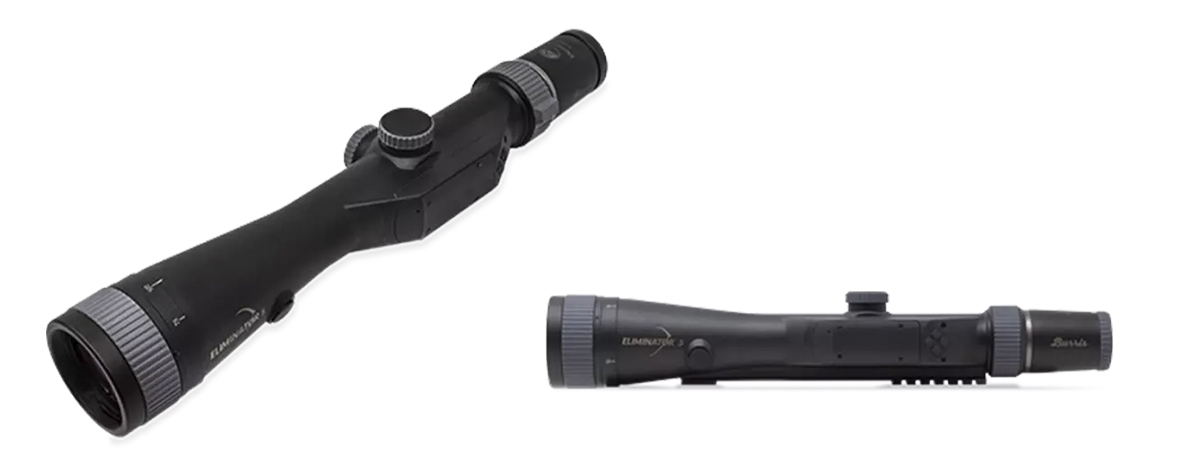
In the years since, Burris has continued to refine the Eliminator platform, expanding power factor options, improving laser performance, adding a more detailed reticle to include wind hold-off, and introducing increasingly higher-quality glass. In all, five generations of the Eliminator series laser scopes have graced hunting rifles, delivering hunters a system to improve shot performance at extended distances while removing the hassles associated with using an independent rangefinder and making bullet drop adjustments on the fly.
Now, for 2024, Burris brings out its sixth-generation Eliminator with the totally revamped and upgraded Eliminator 6.
As you can see, the all-new Eliminator 6 is a large step away from the design of its predecessors. Whereas the early-generation Eliminators forged a somewhat limiting chassis design to accommodate the electronics, the Eliminator 6 boasts a traditional riflescope profile with a straight tube fore and aft of the controls. This is a big deal for a scope with the power to send modern ammo to target at extended distances.
Tube diameter for the Eliminator 6 is 34mm, making it the perfect candidate for Burris’ XTR Signature Ring mounting system. These mounts feature the Burris Pos-Align inserts, which allow the shooter to set up the scope for a broad range of MOA cants (from 0 up to 40 MOA). This is a logical pairing for the Eliminator 6 because such broad MOA adjustment means shooters can take full advantage of the scope’s extended aiming solution capabilities and the terminal performance of today’s long-range ammunition ballistics.
Given the scope’s girthy tube diameter and its incorporation of sophisticated electronics, this is no featherweight optic at 30 ounces. Nevertheless, it weighs only 1.2 ounces more than its Eliminator V predecessor, so we’ll gladly take the marginal weight increase for fresh, contemporary design and enhanced mounting versatility.
As with the prior Eliminator-series scopes, custom ballistic data is uploaded to the Eliminator 6 via Bluetooth connectivity through the BurrisConnect app. Once the data is stored in the scope, the on-board ballistic drop firmware calculates the bullet drop, as well as terminal velocity and energy for the distance ranged. Furthermore, the built-in thermometer, barometer, and inclinometer take into account these factors and display the calculated holdover as an illuminated red dot on the reticle.
But just because it is possible to put the bullet where you want it to go doesn’t mean you should. Hunting bullets are designed to deliver engineered terminal performance (expansion) within a defined velocity range. Since bullets begin to lose velocity after leaving the barrel, the farther the shot the more energy is lost and at some point along the trajectory arc the bullet will not have enough energy to properly expand on impact. To ensure a hunter doesn’t shoot beyond the bullet’s engineered terminal performance velocity, the Eliminator 6 uses a ShotCall function located in the heads-up display. If the ranged target is within the user-defined bullet terminal performance velocity, the ShotCall zone located to the left of the digital level will be empty. If the ranged distance exceeds the inputted threshold, a large “X” will appear in the HUD, meaning the hunter should not take the shot.
Like we said…pretty sophisticated stuff.
In total, there are 10 zones of data presented in the HUD. These include:
- Distance to the target
- Wind hold-off specific to your cartridge ballistics
- Digital scope level (with three optional graphic presentations)
- Battery status
- Density Altitude (allows for automatic or manual altitude input)
- Temperature
- Bluetooth connection
- Impact energy for the ranged distance
- Travel velocity for the ranged distance
- ShotCall marker
In addition to the ShotCall marker, the Eliminator 6 includes three more reticle fault displays that engage when it is not possible for the system to deliver an aiming solution:
- “Too Far” means the ranged distance exceeds the cartridge’s range capability.
- “Zoom Out” shows when the aiming solution is outside of the optic’s field of view.
- “Range Error” lets you know the target could not be ranged (possible for distance and environmental reasons).
All this capability would make one think that the Eliminator 6 must have a rather complicated interface. Not so. All the configuring and customizing is done through the BurrisConnect app, which is quite easy to navigate and is intuitive. On the hardware side, you have only three buttons, all of which are found on the battery cap outboard of the side focus knob. The large button is the ranging button. To use, place the reticle crosshairs on the target and push. The distance will appear in the HUD along with the illuminated aiming point for the ranged distance. Give the ranging button a 5-second press and the HUD will display the current ballistic profile.
The + and – buttons allow you to adjust the display and reticle illumination levels, of which there are nine. Simultaneously depressing these two buttons for five seconds lets you manually input your present elevation should you want to override the automatic altitude density function.
Burris has been working to integrate new design continuity across their product line for 2024, and these have translated to the Eliminator 6. Adjustment knobs and dials, for example, offer deep and aggressive knurling similar to those found on the new-for-2024 Veracity PH riflescope line. Great for gloved hands on icy cold days. Fans of the Eliminator series will also note that parallax adjustment has transitioned from the objective bell to a more traditional side-focus arrangement and it works from 25 yards to infinity.
Talk about fine-tuning, the mechanical side of the Eliminator 6 is all about precise dial-in. Both the windage and elevation turrets feature 1/8 MOA adjustment per click. “Fine as frog hair,” as a friend used to say. Once the reticle is set for your preferred zero distance, you can reset the numbered sleeve back to the zero line.
For its debut, the Eliminator 6 is offered in 4-20x magnification with a 52mm objective lens. Again, high-traction knurling combines with a low-friction dial to ensure smooth and easy magnification adjustment. The eyepiece has a diopter range of +2 to -3.
While the innovation and high-tech imbued in the Eliminator 6 is great stuff, the measure of a good scope still comes down to optical performance. Here, we find no faults. Burris uses extra-low dispersion (ED) glass to nip color aberrations in the bud and to present a crisp image with accurate color. We found image clarity to be right in line with an optic of this class and no edge distortions were evident.
With an MSRP of $3,000, the Burris Eliminator 6 is a substantial investment. When weighing price to viability, though, we must always consider potential costs. If you spend $5K on a long-awaited hunt but fail to fill your tag because you were unable to get a quick and accurate aiming solution when the moment came, would the investment in a high-end, high-function scope have been worth it after all?
That’s not a difficult one to answer, is it?
Burris Eliminator 6 Specifications
- Magnification: 4-20x52mm
- Tube Diameter: 34mm
- Field of View @ 100 yds.: 30.5 ft. (low); 6.5 ft. (high)
- Eye Relief: 3.4 in.
- Maximum Bullet Drop: 63 MOA (low); 35 MOA (high)
- Ranging Distance: ≥2,000 yds. (high reflective); ≥1,800 yds. (deer hide)
- Diopter Setting: +2 to -3
- Focal Plane: rear
- Display Plane: rear
- Reticle: X177
- Display Illumination: push button or auto, 9 levels
- Battery: CR123A x1 (scope); CR2032 x1 (remote)
- Length: 16.4 in.
- Weight: 30 oz.
- Elevation Turret Graduations: 1/8 MOA
- Total Elevation Adjustment Range: 40 MOA
- Windage Turret Graduations: 1/8 MOA
- Total Windage Adjustment Range: 40 MOA
- Parallax Focus: side, 25 yds. to infinity
- MSRP: $3,000

